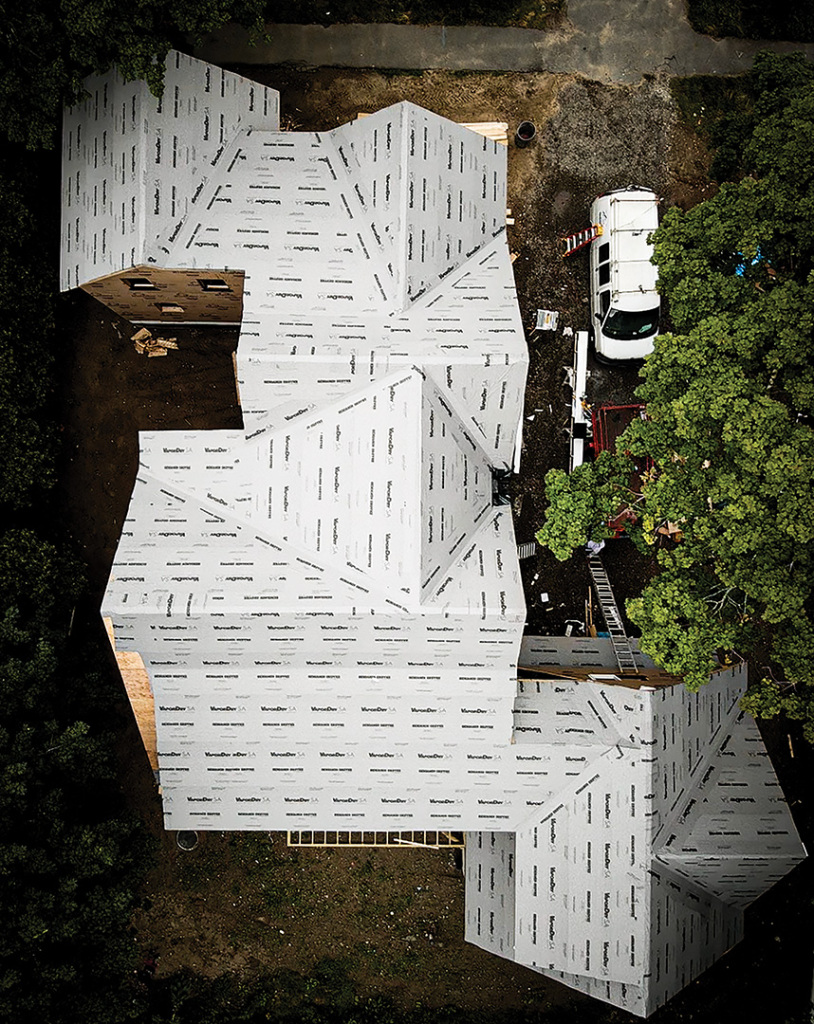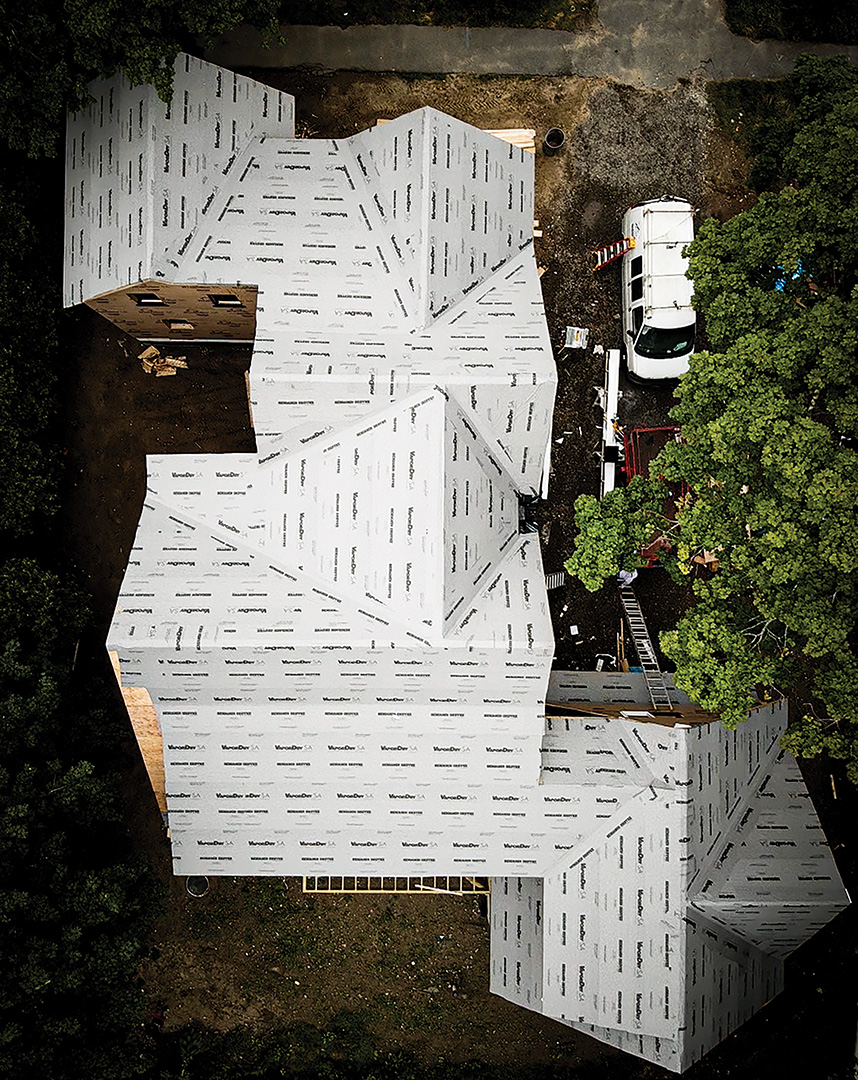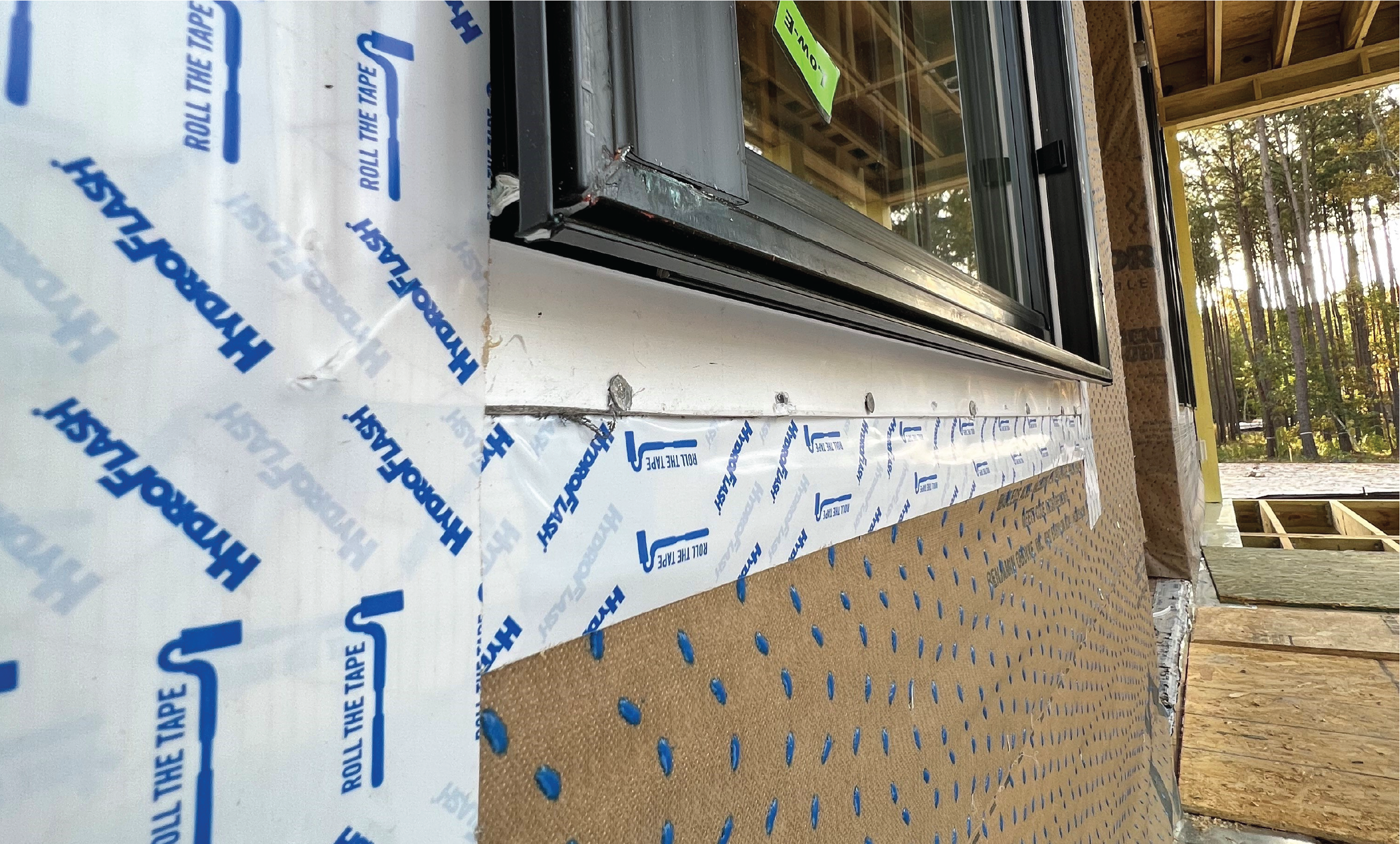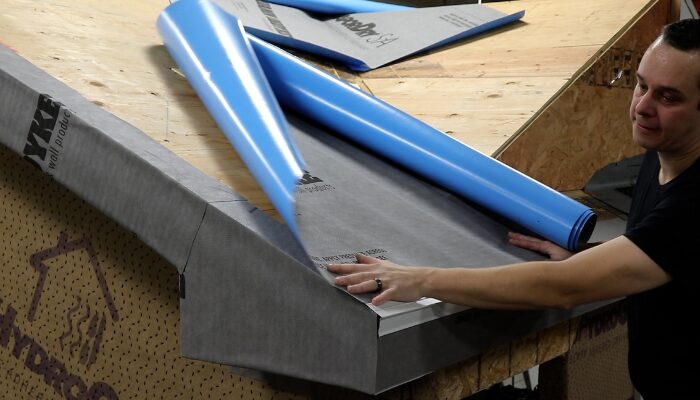Roofing underlayment is a critical component of a healthy roof system. The roofing underlayment acts as a second layer of defense for the roof, prevents water intrusion from wind-driven rain, protects the structure prior to roofing installation, and helps to reduce air infiltration.
There are a range of roofing underlayment options available, offering varying levels of performance. It’s important to evaluate which underlayment is most suited to your project, considering factors like roofing materials, climate, budget, and more.
What to Know About Popular Roofing Underlayments
Here are factors to consider when deciding on a roofing underlayment:
Pros & Cons of Roofing Felt Paper
The most common roofing underlayment, and one of the oldest, felt paper is created by saturating paper or fiberglass mat with asphalt. Felt paper is one of the least expensive options and is readily available. It also is vapor permeable, so it will allow moisture from the attic to escape.
Felt paper can be challenging during installation for a number of reasons: It damages easily, it can only be left exposed to UV rays for a short period of time, and moisture can cause it to wrinkle, preventing the shingles above from lying flat. Felt paper also is challenging to use as an air control layer.
Pros & Cons of Synthetic Roofing Underlayment
Synthetic roofing underlayments are mechanically attached, laminated polypropylene or polyethylene plastic materials. They provide better performance than traditional felt paper.
Synthetic roofing underlayment offers an easier installation option versus felt paper because it’s stronger, allows for increased UV exposure, is thinner and lighter weight, comes in wider rolls, and has better walkability. Synthetic options also typically have high heat tolerances.
In exchange, synthetic roofing underlayments carry a high price tag versus felt paper. They also are not vapor permeable, which can lead to trapped moisture from the attic, and they do not self-seal around fasteners to provide an air control layer.
Also, keep in mind that not all synthetic underlayment products are compatible with every type of roofing material. Before starting your project, check the manufacturer’s recommendations to ensure the underlayment is suitable for the roofing material you plan to use.
Pros & Cons of Pre-Weatherized Sheathing
Pre-weatherized sheathing combines two products in one—a sheathing with an integrated weather barrier—allowing for faster roof construction and a quicker dry-in time. It’s a versatile option and can also be specified in insulated panel options.
Though installation combines two steps, pre-weatherized sheathing does still require precise taping at seams. Installers also must treat the coated layer with care to prevent damage. Over-driven fasteners can create an entry point for water.
Pros & Cons of Self-Adhered Asphalt Roofing Underlayment
An ice and water protector sometimes referred to as “peel and stick,” self-adhered asphalt roof underlayment is a waterproof membrane developed to protect vulnerable areas on a roof from ice and water damage. Because it is vapor impermeable, this type of underlayment may not be appropriate for covering an entire roof.
Self-adhered asphalt underlayment installs fast and is resistant to wind uplift. And because of its adhesive backing, it self-seals around fastener penetrations.
Some drawbacks to self-adhered asphalt roofing underlayment include a heavier weight for carrying, a short UV exposure time, and temperature sensitivity.
Pros & Cons Self-Adhered Acrylic Roofing Underlayment
Synthetic underlayment and an acrylic adhesive combine for a powerful roofing underlayment option. Self-adhered acrylic underlayment is resistant to wind uplift, it is vapor permeable with drying potential for the full roof application, and the acrylic adhesive bonds well to all common materials. Plus, it self-seals around fasteners to provide an air control layer.
The higher performance of a self-adhered acrylic roofing underlayment does come with a higher cost. Installers may need assistance to handle wider rolls, and they’ll need to apply pressure to the underlayment to activate the adhesive.
It’s important to note that self-adhered underlayment is equal to ice and water shield; not all peel-and-stick underlayments are the same. Also, some self-adhered products, like VaporDry SA, have total adhesive coverage on the underlayment, while others only provide adhesive in strips of bands; having one with complete adhesion coverage is critical to meet performance expectations.

VaporDry® SA Samples
GET YOUR FREE VAPORDRY® SA SAMPLES TODAY
Pros & Cons of Ventilated Roof Mats
Roof ventilation mats are designed to create an airspace/cavity to promote air flow in all directions between the roofing material and the sheathing below. They are lightweight and easy to handle, conform to various roof shapes and contours, and are suitable for roofs with steep slopes, multiple angles, or unique architectural features. By facilitating air movement within the roof assembly, ventilation mats contribute to improved energy efficiency. They also effectively manage moisture by allowing air to circulate freely between the roof sheathing and the roofing material.
Roofing mats come at a higher cost than traditional underlayments, and they cannot be used for all shingle types. Installers should avoid over-tightening fasteners to avoid compressing the mats.
How to Choose the Right Roofing Underlayment for your Project
When weighing the pros and cons of each type of roofing underlayment, you’ll want to consider a number of factors:
- Roofing type: What underlayment does the manufacturer of the roofing material recommend? Ensure you’re following manufacturer requirements or you could risk voiding the warranty. (Learn about ideal roofing systems for cedar, metal, and asphalt roofs here.)
- Cost: Cost is always going to be one of the biggest considerations. But it’s important to not let budget completely dictate your decision. Ensure homeowners understand the importance of building a quality, high-performance roof system. The roof is the first line of defense for the house, so it’s worth making a larger investment even if it means sacrificing an interior design feature.
- Climate: Not all roof systems require all the bells and whistles if you don’t need them. In much of Arizona, for example, moisture isn’t as big of a concern, and felt paper might be a suitable choice. But in Florida, which is plagued by wind and rain, you have to assume rain will get in under the shingles and therefore a more robust underlayment, such as VaporDry SA self-adhered acrylic roofing membrane, will be worth the investment.
- Attic: If the home’s attic is conditioned, moisture from the rising heat within will need a way to escape. A vapor-permeable underlayment such as VaporDry SA will help the moisture exit the roofing system, thereby helping the system to dry out and protecting the wood from rot.
- Installation trade-offs: Felt paper is a go-to choice because it meets code and is less expensive. But it’s also a hassle on the jobsite, prone to tearing and wrinkling. The extra steps to fix these issues may not be worth the lower price.
Choose an Underlayment to Protect the Roof Investment
The roof is a home’s first line of defense. No single roofing material is designed to be waterproof—they’re water-shedding—so water will get through and underneath. That’s why you need a robust underlayment underneath to protect the sheathing and the structure from moisture intrusion and the resulting rot and decay.
Remember—the roof is only as strong as what’s under it!
Get more details on specifying roofing underlayments and tacking key detail areas by viewing our AIA course, “Durability for Steep-Pitched Roof Assemblies.” Find it here.



